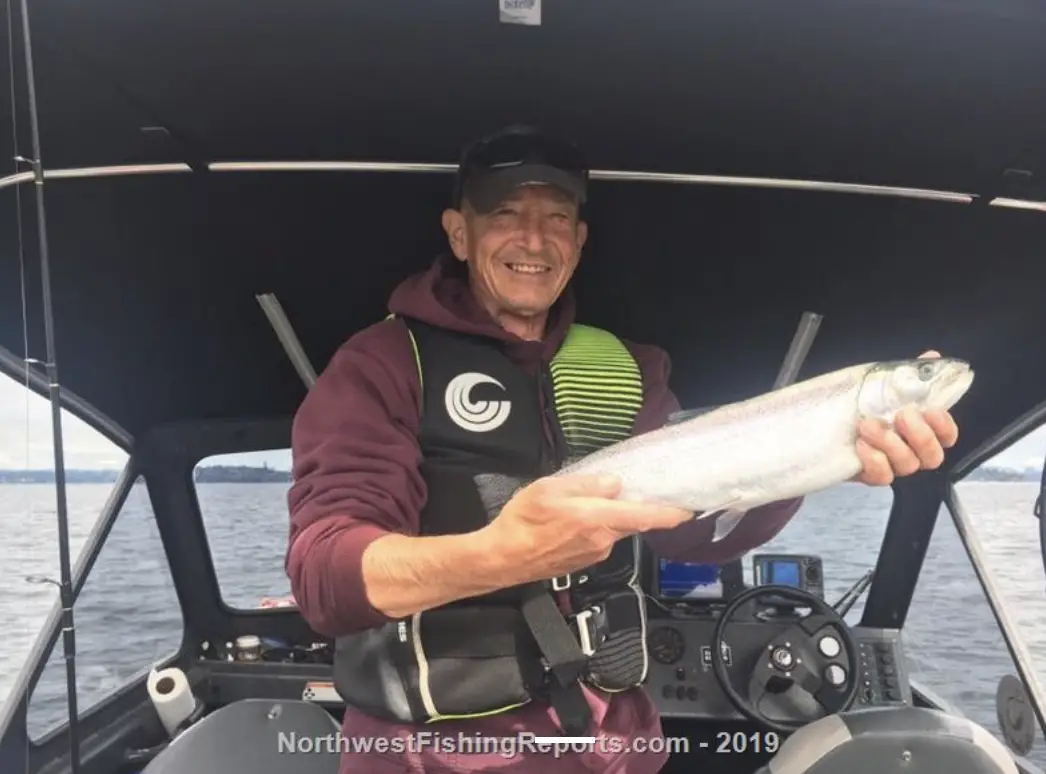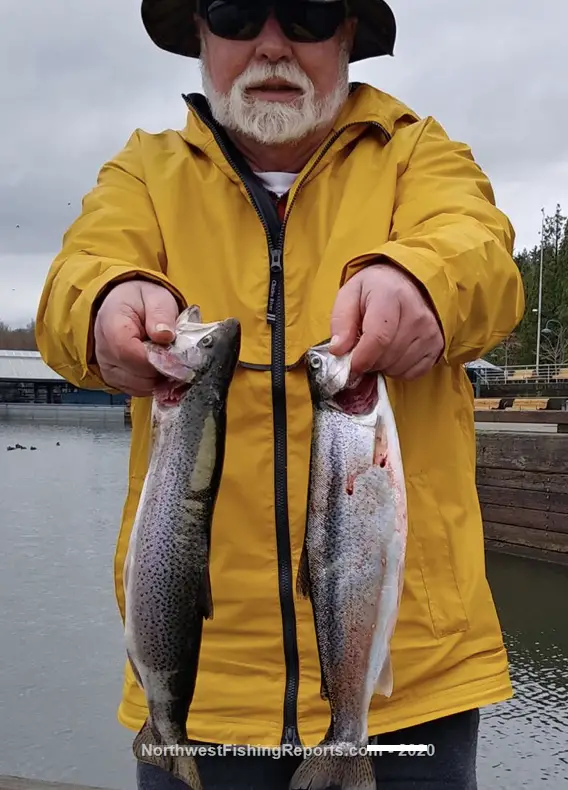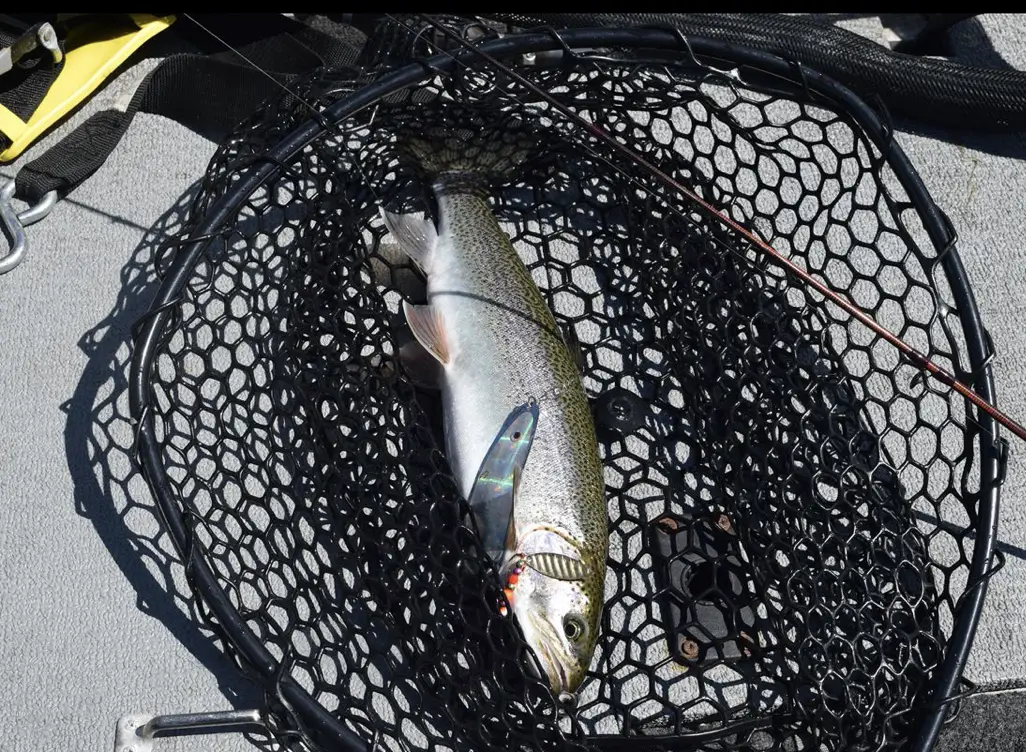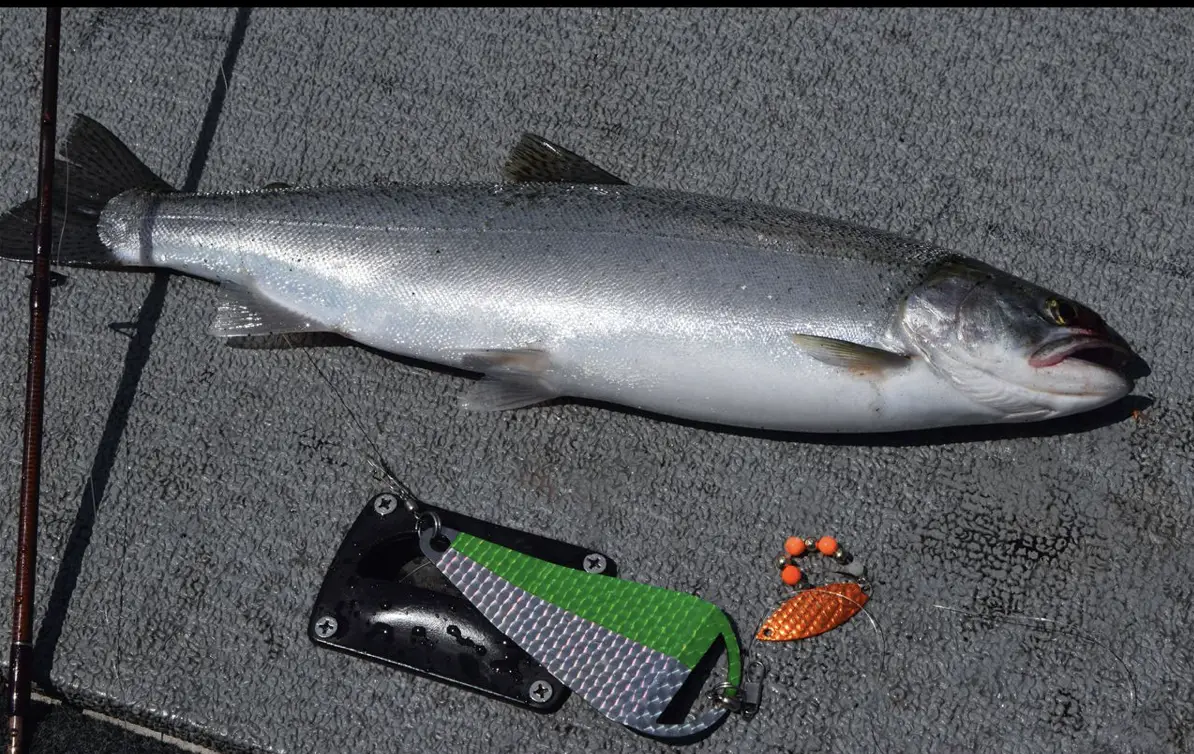Search
Latest Articles
Lake Washington Cutthroat 101
by Paul Lewis, May 05, 2021
This article focuses on targeting cutthroat trout by trolling, which is the preferred method of angling for success on Lake Washington. If you are a boat-less angler or an angler who does not prefer to troll. Using a drop shot rig, spinner, or weighted spoon are good options. Shore based anglers should look for points with good drop offs into deeper water which will hold bait and bring the trout within casting distance. For anglers who do not prefer to troll, use your fish finder to target schools of bait or mark fish, then do a slow drift while jigging a white power worm or similar soft plastic.
TROLLING FOR LAKE WASHINGTON CUTTHROAT TROUT
LOCATION:
Trout can be found throughout the lake, so looking for great starting points can be a challenge. Because of this, breaking the lake down into areas to make a day of fishing manageable is a must. During the springtime, my favorite spot to fish the lake is the south end. This part of the lake is notorious for holding fish. The East side of Mercer Island holds perch in large numbers and as they spawn in the spring, the trout will be around gorging themselves on perch fingerlings. Additionally, in the springtime it has the added bonus of salmon smolt entering the system from the Cedar River, adding another food source for the trout to school around. When trolling this area, start about 2/3 of the way down Mercer Island on the East side, and work your way around the point of the island holding in 70-120 feet of water. When trolling, make “S-turns” to cover the water effectively and definitely don’t be afraid to hug the shoreline at times. The drop off can be fairly fast at spots close to the island, so being within 200 feet of the docks on the Island can often produce well.
In addition to the Island, dropping down to the mouth of the Cedar River and trolling East-West is a great option. The trout will hold here feeding on smolt leaving the river, and when timed right, the fish finder will be alive with trout staked up. From there, troll North along the West shoreline up towards Seward park. Looking at Google Maps, troll between Chinook Beach Park and Martha Washington Park.
For anglers looking to fish the North end, a great spot in the spring is Juanita Beach. In this area, fishing in shallower water can be very successful. Drop into 35-50 FOW in the bay. Working the bay’s north point can be successful as well, as it often holds bait in large numbers.
BAIT AND LURES:
Lake Washington has many tried and true methods to target cutthroat trout. Lures are a preferred method to target these fish, with spinners and spoons taking the forefront. Wedding Ring, Diamond Flash Spinners, and Koka-bow spinners are all great options for spinners, and spoons such as needlefish and Krockadile spoons in sizes from 1.5 inches to 3.5 inches should be in the tackle box. When trolling spinners, use a 4” or 6” dodger with anywhere from 14-20” of leader depending on the day. Often times changing the leader length is all it takes to entice a bite. Tip your spoons with nightcrawler or cured shrimp to add some extra enticement as well! Spoons can be successful trolled naked (no dodger) or paired with a dodger. Make sure to use a longer leader (18-25”) when fishing spoons. Spoons have their own independent action, so using too short of a leader will kill their unique wobble. plugs like small Flatfish and Rapalas are successful in a variety of colors, with perch and herring colors being great options. Similar to spoons, use a longer leader when fishing with a dodger, or troll them solo,
In addition to spoons, plugs and spinners, one of the oldest methods of cutthroat trout fishing on lake Washington is a naked cut-plug herring. This tactic, usually reserved for salmon fishing, can kill it on BIG lake Washington cutties. These are usually trolled naked, and make sure to have a nice, tight spin on them. Be sure to have plenty of extra herring and check your bait often, as short strikes can happen and tear up the bait.
Aside from your lures and bait, using scents are often the difference between success and failure. Herring, earthworm, Trophy Trout, shrimp, and anise are all great options.
FINAL INFO
Trolling speeds on Lake Washington vary a lot. For bait and spinners, 1.5-2 is the usual speed, then ramping it up to 2-2.5 is a good choice for spoons and plugs. Vary your speed throughout the day until you get strikes, then zone in on that speed for the day. The fish can be anywhere in the water column from the surface to 50+ feet in the spring, so make sure to cover water!
Finally, the limit on lake Washington is 5 trout. Lake Washington is a single-pole only lake, so make sure to only use one rod per person fishing. There is a recommended consumption limit on Lake Washington cutthroat trout of 1 meal per month.
With this info, you’ll be set to have a great day on the water! Lake Washington can be a tough fishery, but when you get on them, it can certainly be a blast. For more information, be sure to visit Northwest Fishing Reports’ website and check the lake’s reports. Some great ones to look at are posts from Rmrauscher, Salmonbarry, and DjButler (some Lake Washington legends!)
Tight lines!




